You can contact LEARNZ, part of CORE Education, at:
Postal Address:
PO Box 13 678,
Christchurch 8141,
New Zealand

Watch Shelley's diary cam video.
Kia ora koutou,
Finally, your opportunity to see what’s new on the Waterview Connection construction site has arrived. I have been looking forward to this day for a long time and couldn’t wait to go underground to see how the tunnels are progressing.
Glenfield Intermediate School’s Questions
Before you could head into the tunnels you had to complete the audioconference with Glenfield Intermediate School. Alain Giauque met with you at the site office and answered Glenfield’s questions. Alain is a Project Engineer and has been working at Waterview for the past two years. One student asked about what would happen to the tunnels in a large earthquake and Alain explained that the tunnels have been built to withstand a strong quake. Large interlocking pieces of concrete line the tunnel and make it really strong. The tunnels are probably one of the safest places to be during an earthquake. You can listen to the audioconference recording to find out more.
Time to head underground
You were taken through a safety induction course before being issued with PPE (Personal Protective Equipment). This equipment included safety boots, glasses, gloves, hard hat and high-vis vest. Then it was time to head out onto the construction site. I was amazed at how much things have progressed since last year’s field trip. You can watch videos from last year to see the difference. Many areas had been planted and the southern approach to the tunnels looked to be almost finished. The southern ventilation building stack stood out as we drove down to the tunnel.
The final breakthrough
Back in October last year Alice the Tunnel Boring Machine broke through to complete the second tunnel. Many people gathered to watch the TBM as she slowly cracked the headwall of concrete that had been constructed to ensure the tunnel would not collapse. It took around two hours for Alice to clear the headwall and safely complete the tunnel. It was a moment to celebrate and many people stopped work to record the event. You can see this on the video. Alain talked about how this process was carefully monitored to make sure everything went smoothly. Once Alice had finished her tunnel boring she had to be carefully dismantled so that parts could be re-used. Warwick Sextus who you met on the project last year explained how Alice was taken apart and you can watch the video about this. Now that two 13-metre-wide, 2.4 kilometre tunnels have been built and a road created within the tunnels, it’s time to focus on putting services in to these tunnels.
Between tunnels
Alain took you into the northern tunnel and showed you one of the cross-passages. It was quite weird to be able to walk through a passage and pop through into the southern tunnel. There are 16 cross passages that have been dug and lined so that if there is an emergency people can walk from one tunnel to the other to escape. These cross passages also house electrical cables and water pipes. The water pipes are part of the ‘deluge’ system which is like a giant sprinkler system which is activated if there is a fire in the tunnel. Enough water to fill half of an Olympic size swimming pool is kept in tanks in the ventilation building to use in the case of a fire. You can watch the video to find out more.
Tunnel services
The tunnels need to have services added to make them safe for people to use. Dave Taylor is a Mechanical and Electrical Engineer and he talked to you about how the ventilation system works to remove exhaust fumes from the tunnel. Huge fans are used to take fumes from the tunnel to the vent stack and out into the air. Otherwise too much carbon monoxide could build up which is not healthy for people. You could see the big fans on the rigging that runs along the top of the tunnel. This is also where lighting will be attached and signs for people to know what speed to go. The tunnels are also monitored by sensors and cameras to detect fire and if there is an accident. You will find out more about this on Thursday.
It has been a busy day spent mostly underground. I am sure you are now looking forward to seeing what’s new above ground. Tomorrow we will take a closer look at how the Waterview Connection Project has changed the local area.
See you in the morning,
Shelley the LEARNZ field trip teacher.
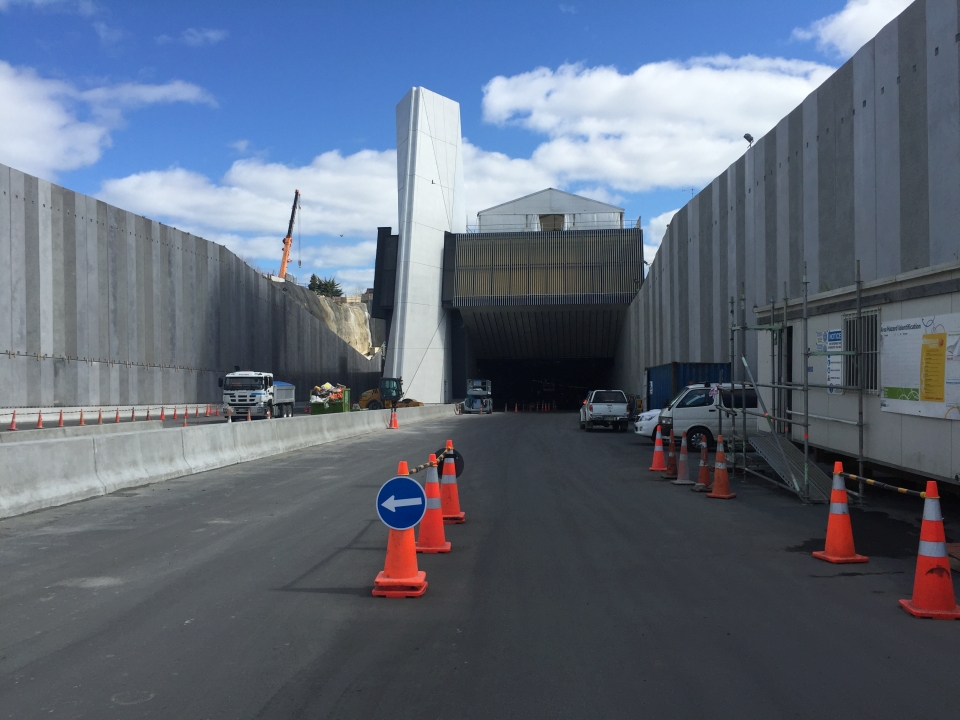
Approaching the southern tunnel entrance on the Waterview Connection construction site. Why are there two tunnels? Image: LEARNZ.
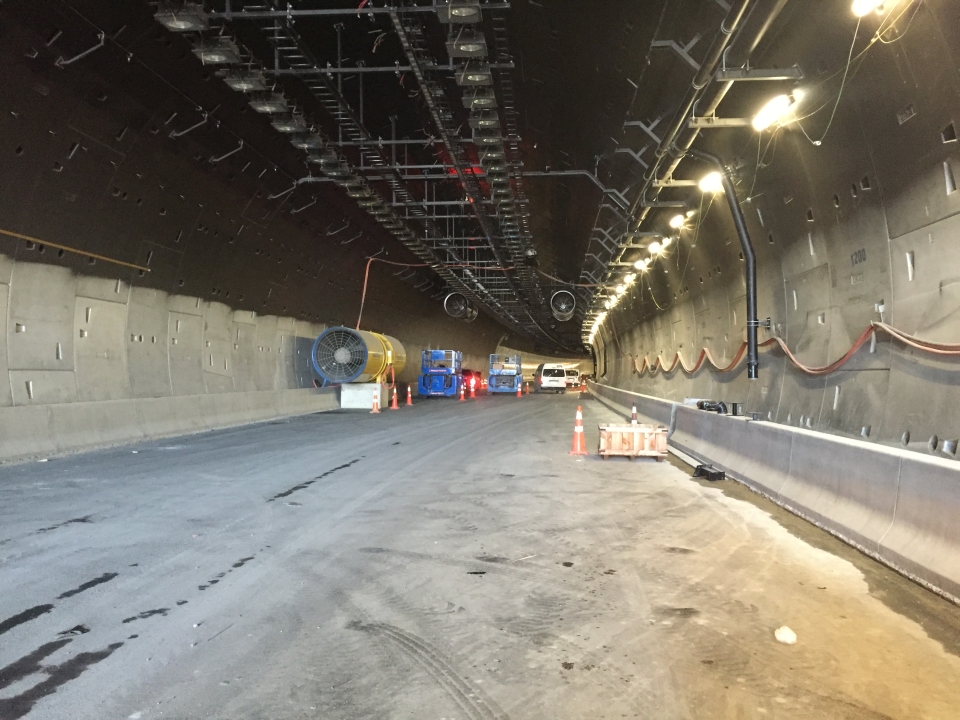
Inside the northern tunnel. What do you think still needs to be finished before the tunnel can be open to the public? Image: LEARNZ.
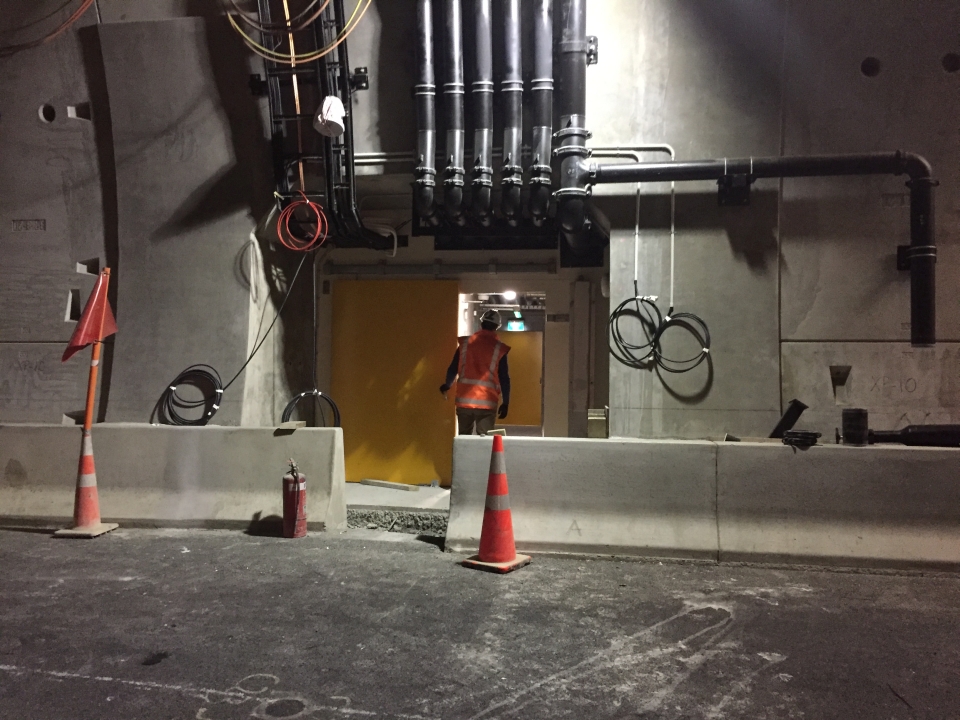
Alain heads into one of the sixteen cross passages that link the two tunnels. What are these cross passages used for? Image: LEARNZ.
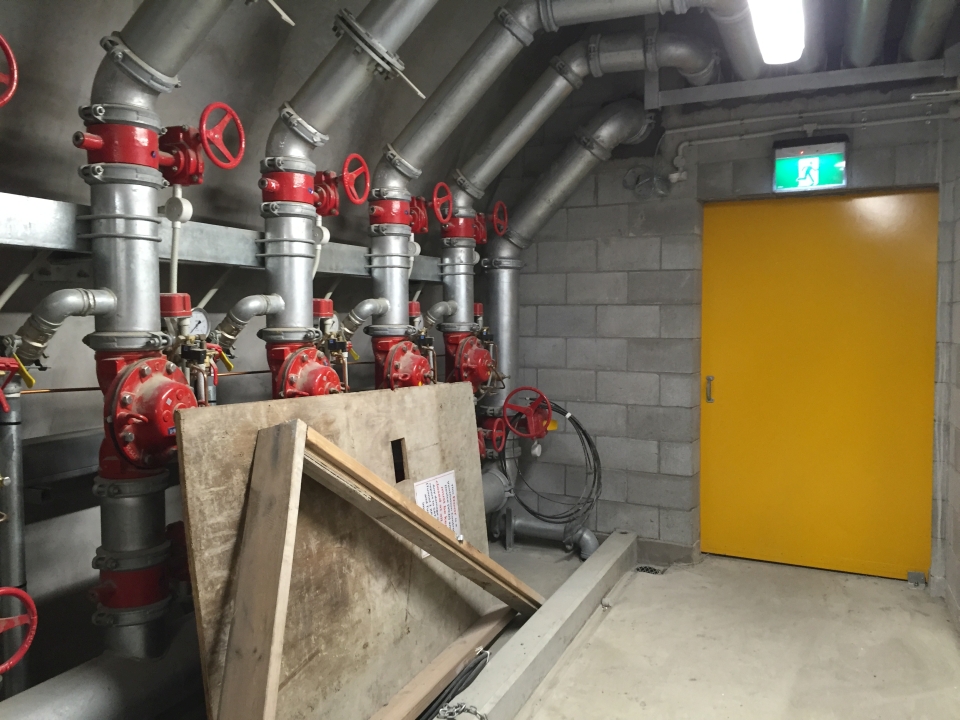
These water pipes inside the cross passages are part of the 'deluge' system which will deliver water to put out fires in the tunnel. How is fire detected in the tunnels? Image: LEARNZ.
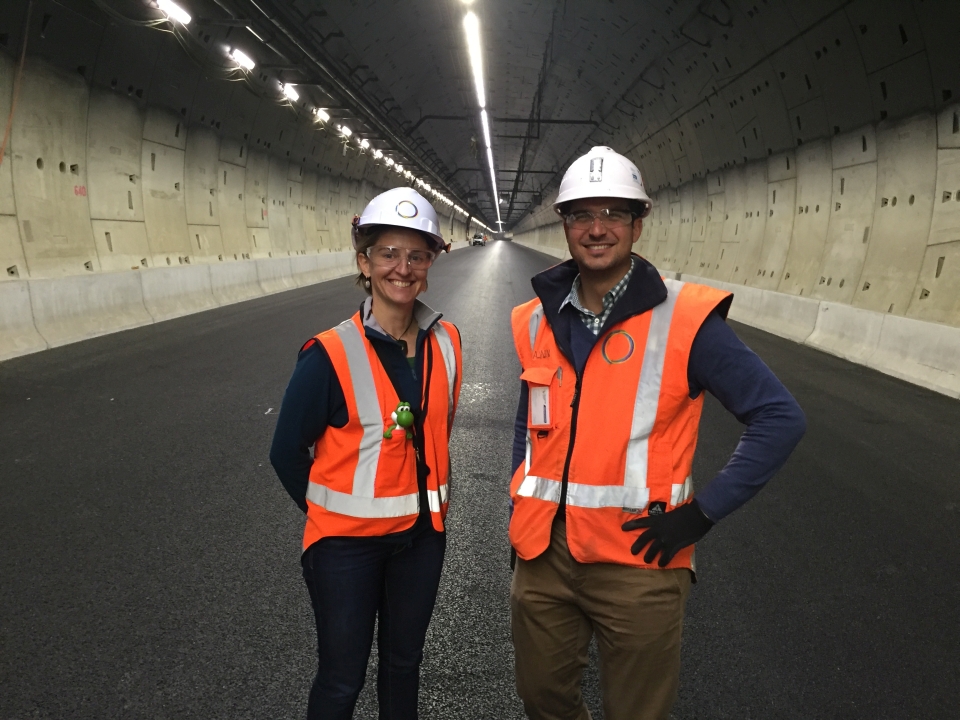
Alain shows Shelley around the southern tunnel. Why do you think the tunnel roof is painted black? Image: LEARNZ.
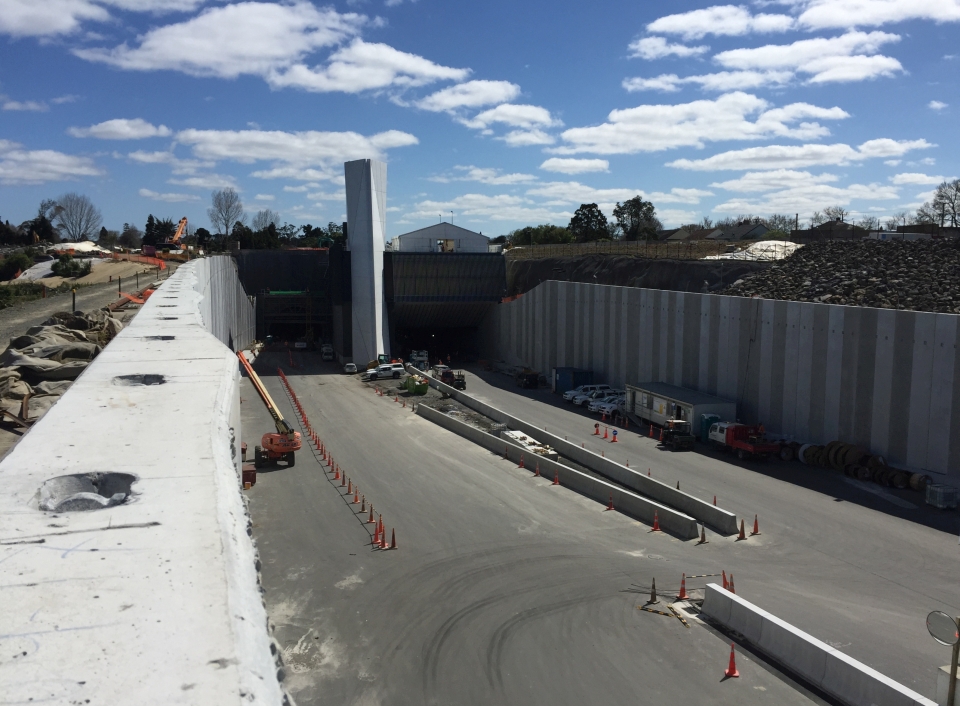
Looking towards the southern ventilation building above the tunnel portals. Why is it important to vent the tunnels? Image: LEARNZ.
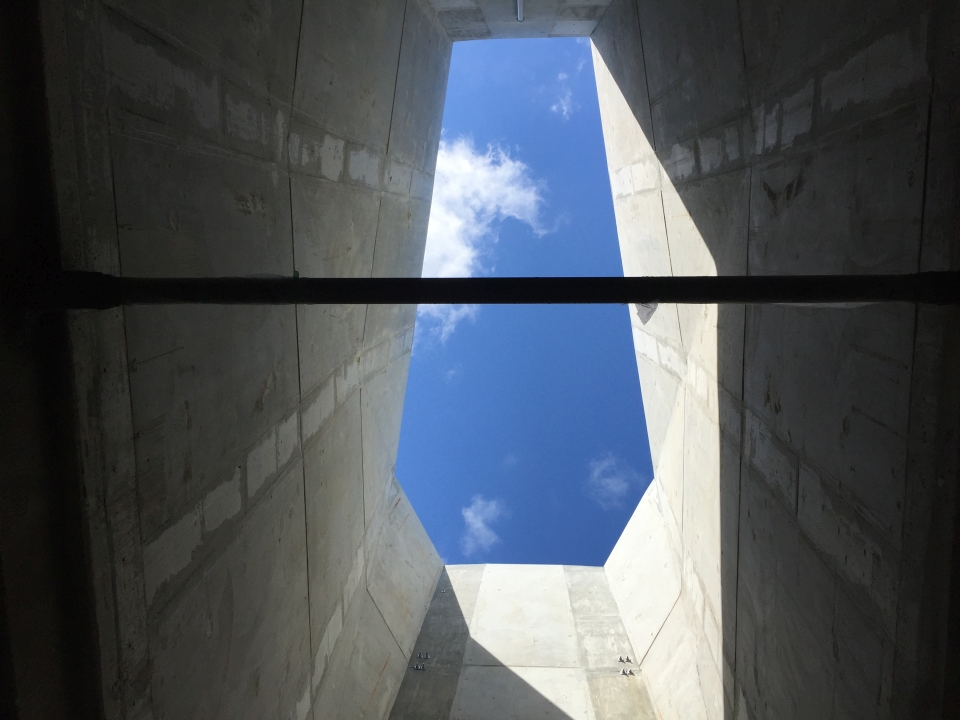
Looking up through the southern ventilation stack where exhaust fumes will be released from the tunnel. Image: LEARNZ.
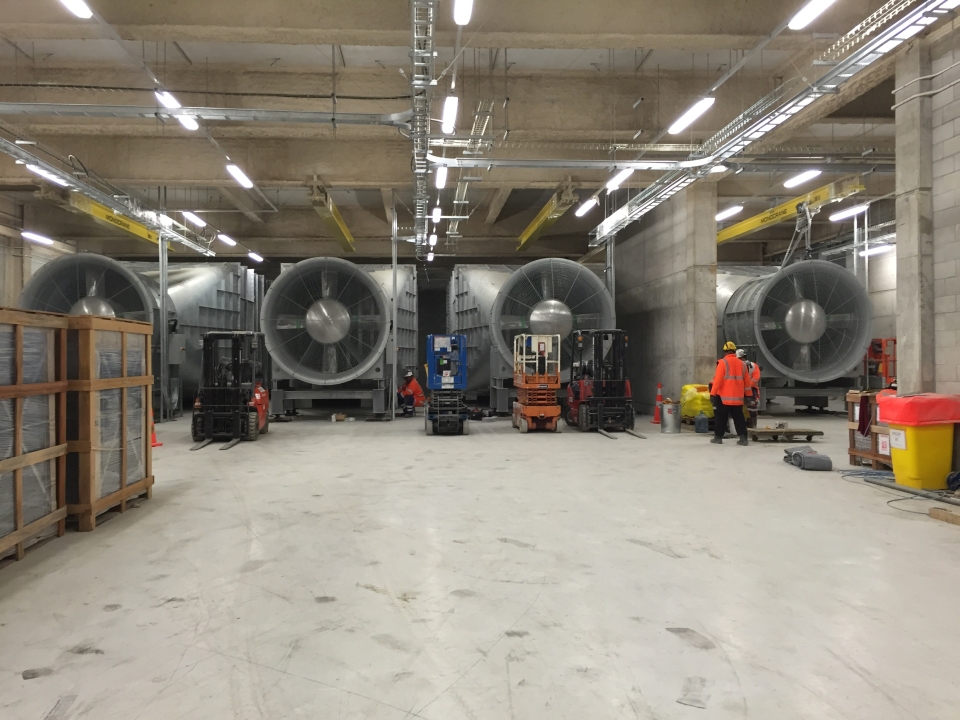
These huge fans will draw exhaust fumes out of the tunnel. Image: LEARNZ.
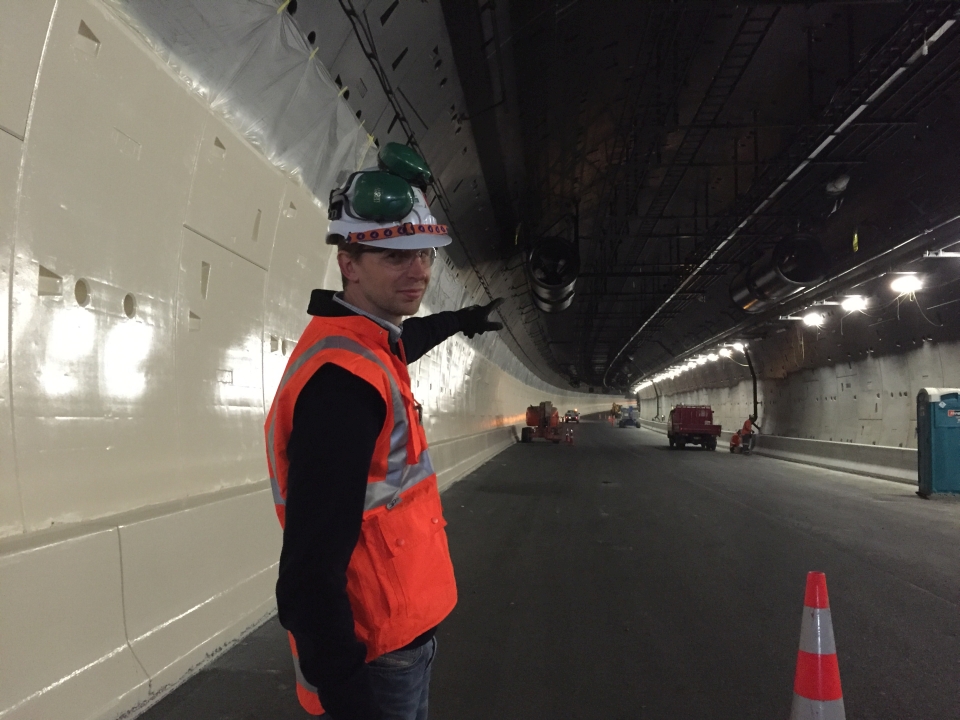
Dave shows you the fans in the roof of the tunnel that are also part of the ventilation system. Image: LEARNZ.
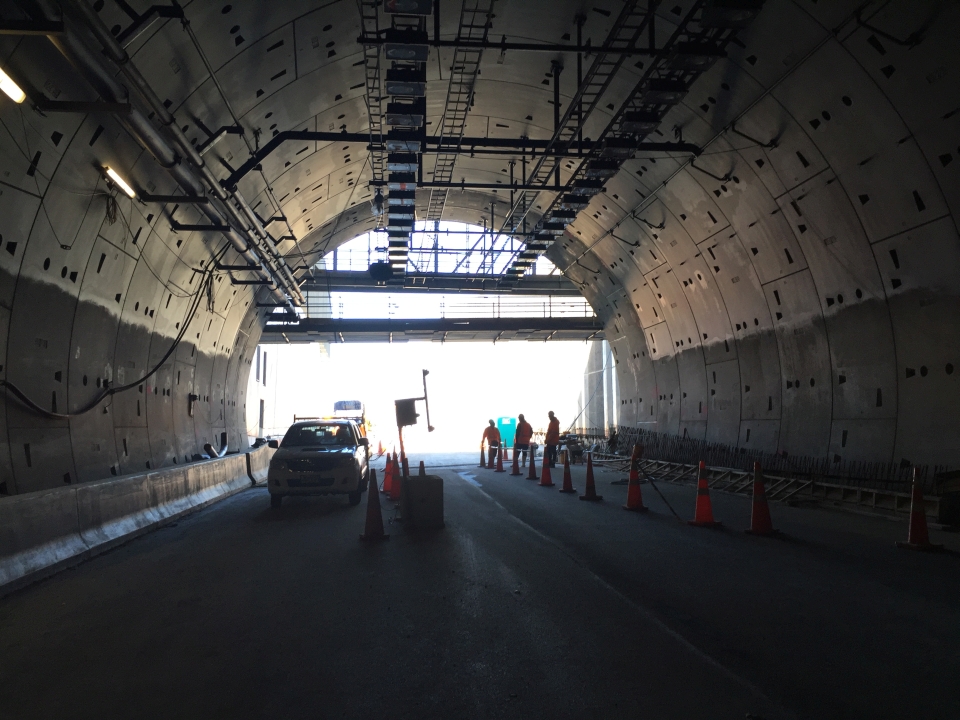
Time to head back up to the surface after exploring the Waterview tunnels. Image: LEARNZ.